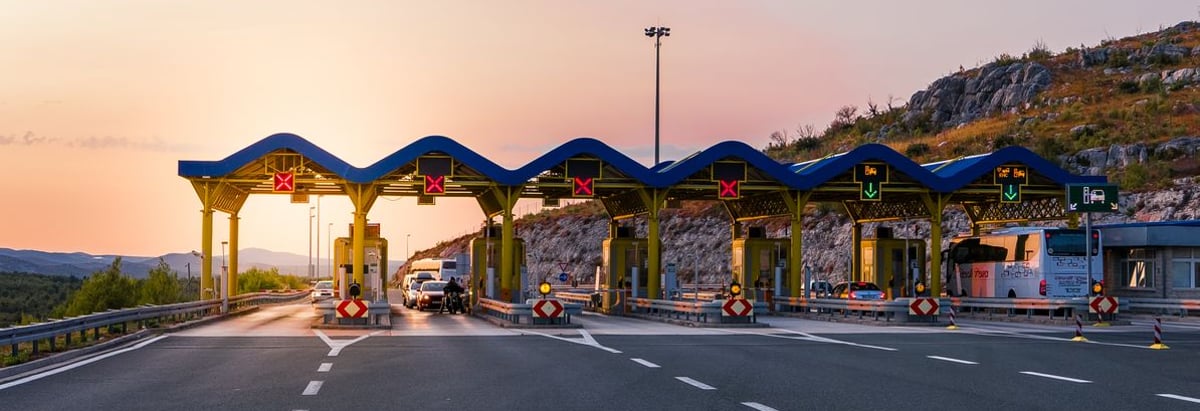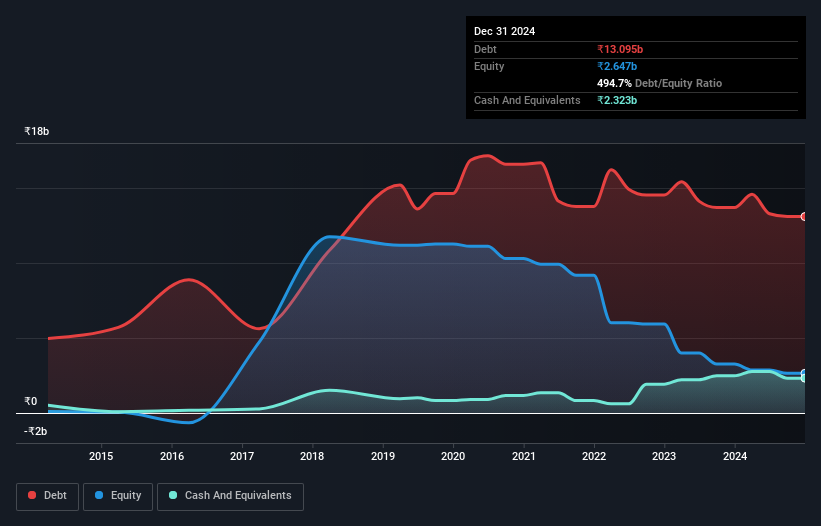- India
- /
- Infrastructure
- /
- NSEI:BRNL
These 4 Measures Indicate That Bharat Road Network (NSE:BRNL) Is Using Debt Extensively

David Iben put it well when he said, 'Volatility is not a risk we care about. What we care about is avoiding the permanent loss of capital.' It's only natural to consider a company's balance sheet when you examine how risky it is, since debt is often involved when a business collapses. We can see that Bharat Road Network Limited (NSE:BRNL) does use debt in its business. But the more important question is: how much risk is that debt creating?
When Is Debt A Problem?
Debt assists a business until the business has trouble paying it off, either with new capital or with free cash flow. Part and parcel of capitalism is the process of 'creative destruction' where failed businesses are mercilessly liquidated by their bankers. However, a more common (but still painful) scenario is that it has to raise new equity capital at a low price, thus permanently diluting shareholders. Of course, plenty of companies use debt to fund growth, without any negative consequences. When we think about a company's use of debt, we first look at cash and debt together.
What Is Bharat Road Network's Net Debt?
As you can see below, Bharat Road Network had ₹13.1b of debt at September 2024, down from ₹13.7b a year prior. On the flip side, it has ₹2.32b in cash leading to net debt of about ₹10.8b.

A Look At Bharat Road Network's Liabilities
Zooming in on the latest balance sheet data, we can see that Bharat Road Network had liabilities of ₹10.7b due within 12 months and liabilities of ₹13.8b due beyond that. On the other hand, it had cash of ₹2.32b and ₹509.8m worth of receivables due within a year. So it has liabilities totalling ₹21.7b more than its cash and near-term receivables, combined.
The deficiency here weighs heavily on the ₹2.64b company itself, as if a child were struggling under the weight of an enormous back-pack full of books, his sports gear, and a trumpet. So we'd watch its balance sheet closely, without a doubt. At the end of the day, Bharat Road Network would probably need a major re-capitalization if its creditors were to demand repayment.
See our latest analysis for Bharat Road Network
We use two main ratios to inform us about debt levels relative to earnings. The first is net debt divided by earnings before interest, tax, depreciation, and amortization (EBITDA), while the second is how many times its earnings before interest and tax (EBIT) covers its interest expense (or its interest cover, for short). This way, we consider both the absolute quantum of the debt, as well as the interest rates paid on it.
Weak interest cover of 0.06 times and a disturbingly high net debt to EBITDA ratio of 10.2 hit our confidence in Bharat Road Network like a one-two punch to the gut. The debt burden here is substantial. Even worse, Bharat Road Network saw its EBIT tank 90% over the last 12 months. If earnings continue to follow that trajectory, paying off that debt load will be harder than convincing us to run a marathon in the rain. The balance sheet is clearly the area to focus on when you are analysing debt. But it is Bharat Road Network's earnings that will influence how the balance sheet holds up in the future. So if you're keen to discover more about its earnings, it might be worth checking out this graph of its long term earnings trend.
Finally, a company can only pay off debt with cold hard cash, not accounting profits. So it's worth checking how much of that EBIT is backed by free cash flow. Over the last three years, Bharat Road Network actually produced more free cash flow than EBIT. There's nothing better than incoming cash when it comes to staying in your lenders' good graces.
Our View
On the face of it, Bharat Road Network's EBIT growth rate left us tentative about the stock, and its level of total liabilities was no more enticing than the one empty restaurant on the busiest night of the year. But at least it's pretty decent at converting EBIT to free cash flow; that's encouraging. It's also worth noting that Bharat Road Network is in the Infrastructure industry, which is often considered to be quite defensive. Overall, it seems to us that Bharat Road Network's balance sheet is really quite a risk to the business. For this reason we're pretty cautious about the stock, and we think shareholders should keep a close eye on its liquidity. The balance sheet is clearly the area to focus on when you are analysing debt. However, not all investment risk resides within the balance sheet - far from it. Case in point: We've spotted 4 warning signs for Bharat Road Network you should be aware of, and 1 of them is a bit unpleasant.
If you're interested in investing in businesses that can grow profits without the burden of debt, then check out this free list of growing businesses that have net cash on the balance sheet.
Valuation is complex, but we're here to simplify it.
Discover if Bharat Road Network might be undervalued or overvalued with our detailed analysis, featuring fair value estimates, potential risks, dividends, insider trades, and its financial condition.
Access Free AnalysisHave feedback on this article? Concerned about the content? Get in touch with us directly. Alternatively, email editorial-team (at) simplywallst.com.
This article by Simply Wall St is general in nature. We provide commentary based on historical data and analyst forecasts only using an unbiased methodology and our articles are not intended to be financial advice. It does not constitute a recommendation to buy or sell any stock, and does not take account of your objectives, or your financial situation. We aim to bring you long-term focused analysis driven by fundamental data. Note that our analysis may not factor in the latest price-sensitive company announcements or qualitative material. Simply Wall St has no position in any stocks mentioned.
About NSEI:BRNL
Bharat Road Network
Owns, designs, develops, builds, and operates transfers road and related services in India.
Good value low.
Market Insights
Community Narratives



